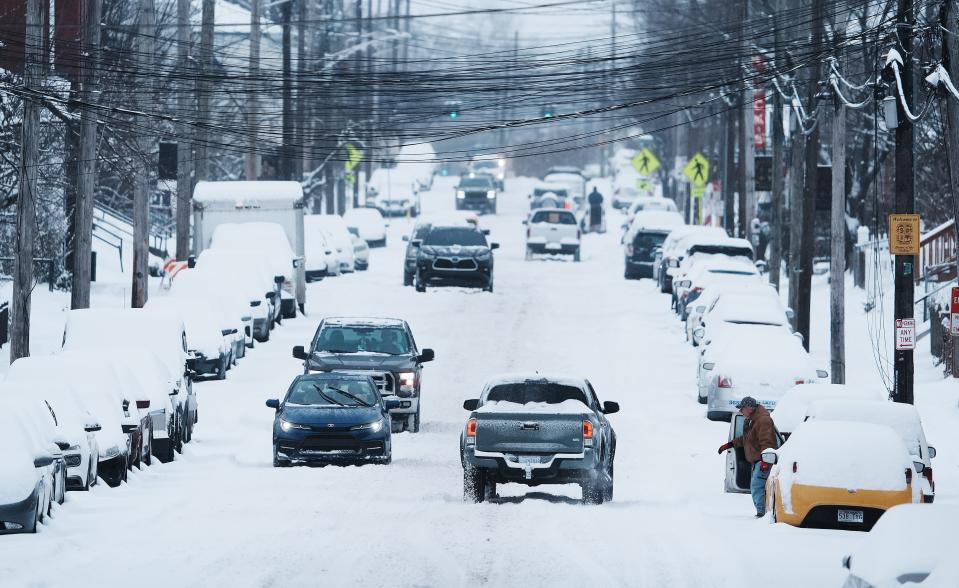A major winter storm is sweeping across the Midwest, bringing heavy snow, ice, and freezing rain to Kansas, Missouri, Illinois, and Kentucky. The storm has created dangerous travel conditions, widespread power outages, and emergency declarations as states brace for continued impacts.
Current Weather Conditions
The storm is affecting several major cities, including Kansas City, St. Louis, Chicago, and Louisville. Here’s a look at the current conditions:
- Kansas City, Kansas: Cloudy skies with temperatures around 34°F (1°C).
- St. Louis, Missouri: Overcast with a current temperature of 40°F (4°C), expected to reach 47°F later today.
- Chicago, Illinois: Mostly cloudy at 30°F (-1°C) with decreasing clouds expected throughout the day.
- Louisville, Kentucky: Cloudy with fog in the morning at 55°F (13°C), clearing later with showers possible.
Forecasters predict additional snow and ice accumulations in certain areas, particularly in Missouri and Illinois, where conditions could worsen overnight.
Hazardous Travel and Road Closures
The storm has turned many highways into slick, dangerous routes, particularly in Kansas and Missouri, where major interstates including I-35, I-70, and I-435 have reported multiple accidents. Officials are urging residents to avoid unnecessary travel. Those who must travel are advised to drive slowly, keep a safe distance from other vehicles, and carry emergency supplies.
In Kentucky, law enforcement has been dispatched to monitor roadways, and salt trucks are working overtime to keep highways clear.
Power Outages and Emergency Declarations
Ice accumulation on power lines and trees has resulted in widespread power outages, especially in Kentucky and southern Illinois. Governor Andy Beshear of Kentucky has declared a state of emergency in anticipation of worsening road conditions and additional power outages. Residents are being encouraged to stock up on food, water, flashlights, and extra batteries to prepare for potential long-term disruptions.
Safety Precautions for Residents
- Stay Informed: Monitor local weather reports for real-time updates.
- Limit Travel: Avoid driving unless necessary.
- Prepare for Power Outages: Have backup power sources, such as generators, and keep mobile devices charged.
- Check on Neighbors: Ensure that vulnerable neighbours, including the elderly and disabled, have the supplies they need.
What’s Next?
The storm is expected to move eastward, potentially impacting the Great Lakes and Northeast in the coming days. Residents in affected areas should prepare for continued snow and ice, with possible travel disruptions extending into the weekend.
Final Thoughts
With severe weather conditions ongoing, authorities are urging residents to prioritize safety and avoid unnecessary risks. Stay updated on changing weather patterns and follow local emergency instructions to navigate this dangerous storm.

